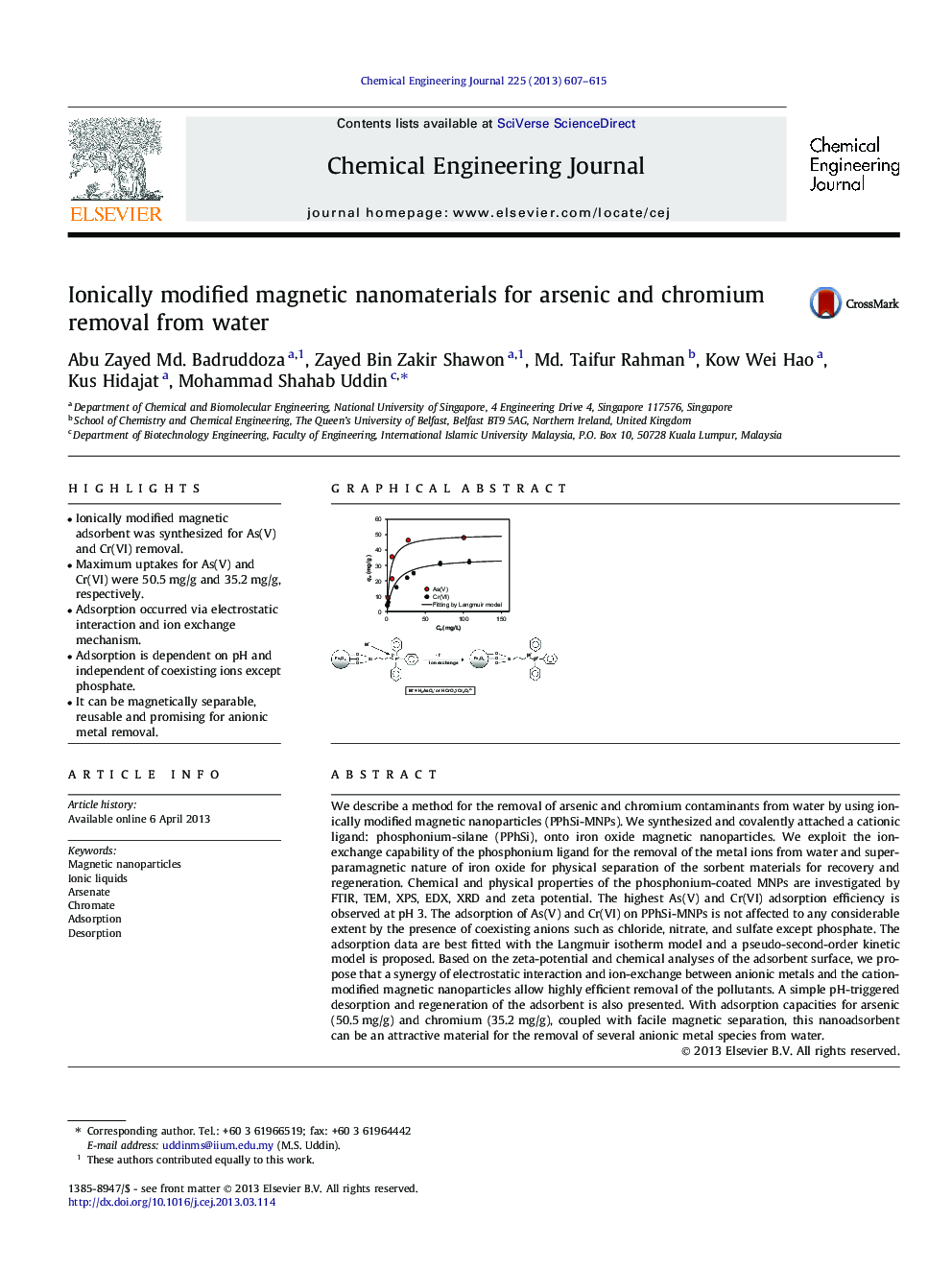| کد مقاله | کد نشریه | سال انتشار | مقاله انگلیسی | نسخه تمام متن |
|---|---|---|---|---|
| 148708 | 456421 | 2013 | 9 صفحه PDF | دانلود رایگان |

• Ionically modified magnetic adsorbent was synthesized for As(V) and Cr(VI) removal.
• Maximum uptakes for As(V) and Cr(VI) were 50.5 mg/g and 35.2 mg/g, respectively.
• Adsorption occurred via electrostatic interaction and ion exchange mechanism.
• Adsorption is dependent on pH and independent of coexisting ions except phosphate.
• It can be magnetically separable, reusable and promising for anionic metal removal.
We describe a method for the removal of arsenic and chromium contaminants from water by using ionically modified magnetic nanoparticles (PPhSi-MNPs). We synthesized and covalently attached a cationic ligand: phosphonium-silane (PPhSi), onto iron oxide magnetic nanoparticles. We exploit the ion-exchange capability of the phosphonium ligand for the removal of the metal ions from water and superparamagnetic nature of iron oxide for physical separation of the sorbent materials for recovery and regeneration. Chemical and physical properties of the phosphonium-coated MNPs are investigated by FTIR, TEM, XPS, EDX, XRD and zeta potential. The highest As(V) and Cr(VI) adsorption efficiency is observed at pH 3. The adsorption of As(V) and Cr(VI) on PPhSi-MNPs is not affected to any considerable extent by the presence of coexisting anions such as chloride, nitrate, and sulfate except phosphate. The adsorption data are best fitted with the Langmuir isotherm model and a pseudo-second-order kinetic model is proposed. Based on the zeta-potential and chemical analyses of the adsorbent surface, we propose that a synergy of electrostatic interaction and ion-exchange between anionic metals and the cation-modified magnetic nanoparticles allow highly efficient removal of the pollutants. A simple pH-triggered desorption and regeneration of the adsorbent is also presented. With adsorption capacities for arsenic (50.5 mg/g) and chromium (35.2 mg/g), coupled with facile magnetic separation, this nanoadsorbent can be an attractive material for the removal of several anionic metal species from water.
Figure optionsDownload as PowerPoint slide
Journal: Chemical Engineering Journal - Volume 225, 1 June 2013, Pages 607–615